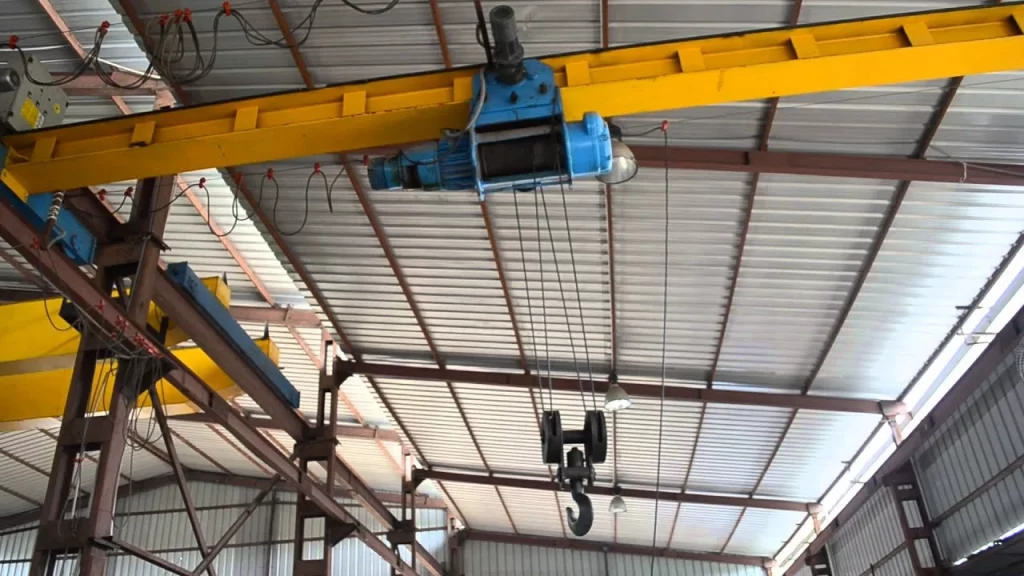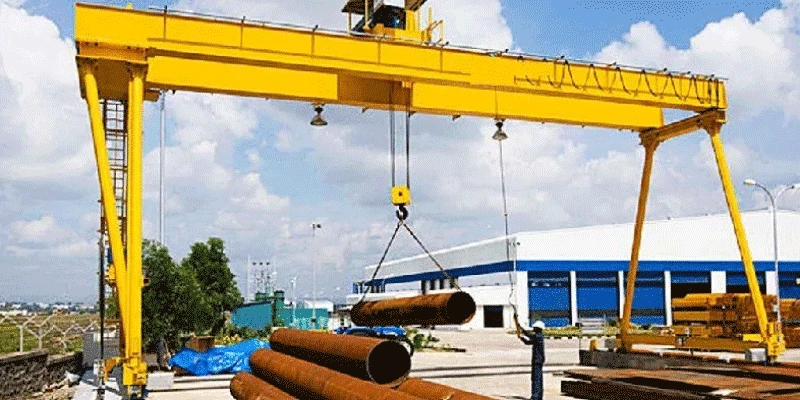Overhead Electric Hoist (EOT) cranes are essential equipment in industries for lifting and transporting heavy loads. These cranes are designed to provide efficient lifting and movement within a factory, warehouse, or construction site. Among the different types of EOT cranes, single girder and double girder cranes are the most commonly used. Both are useful in different ways, depending on the application. Understanding the difference between these two types of cranes can help businesses make an informed decision about which one is best for their needs.
What Is an EOT Crane?
An EOT crane is an overhead crane that uses an electric hoist to lift and move heavy loads. The hoist is mounted on a trolley, which moves along a bridge. This bridge is supported by either one or two girders, depending on the type of crane. These cranes are highly versatile and are used in a wide range of industries, including manufacturing, construction, and logistics. They help increase productivity and reduce labor costs by handling heavy loads safely and efficiently.
What Is a Single Girder EOT Crane?
As the name suggests, a single girder EOT crane is designed with just one girder or beam that runs along the width of the crane. This girder supports the hoist and the trolley that moves along it. Single girder cranes are typically lighter and more compact compared to double girder cranes, making them ideal for applications where space is limited and loads are not extremely heavy.
Key Features of Single Girder EOT Cranes:
Cost-Effective: Single girder cranes are generally less expensive than double girder cranes, both in terms of initial cost and maintenance.
Lightweight and Compact: They require less space and are ideal for environments with limited overhead space.
Lower Load Capacity: Single girder cranes are best suited for lighter to moderate loads, usually in the range of 5 to 20 tons.
Simple Design: Their design is straightforward, making them easier and cheaper to install.
Lower Headroom: Since they use a single girder, they have less clearance than double girder cranes, which may limit their use in certain applications.
What Is a Double Girder EOT Crane?
In contrast, a double girder EOT crane has two girders that span across the width of the crane. These two girders support the hoist and trolley, allowing for heavier lifting capacities and greater flexibility in terms of design. Double girder cranes are ideal for industries that need to handle large or very heavy loads.
Key Features of Double Girder EOT Cranes:
Higher Load Capacity: Double girder cranes can lift much heavier loads, typically in the range of 20 to 100 tons or more.
Greater Headroom: The additional girder allows for more clearance, which is ideal for lifting taller loads or when greater vertical space is needed.
Versatility: Double girder cranes can be customized to handle different types of lifting tasks, including the use of specialized hoists and trolleys.
Better Stability and Durability: With two girders, the load distribution is more balanced, making the crane more stable and durable under heavy loads.
Higher Initial Cost: Double girder cranes are generally more expensive due to their complex design, larger components, and greater load capacity.
Single Girder vs. Double Girder EOT Cranes: Which Is Best for Your Business?
Choosing between a single girder and a double girder EOT crane depends on several factors, including the size and type of loads you need to lift, available space, and budget.
When to Choose a Single Girder Crane:
Limited Budget: If your business is working with a tighter budget, a single girder crane is a cost-effective option. They have lower upfront costs and are more affordable to maintain.
Smaller Load Requirements: Single girder cranes are ideal for lifting light to medium loads. If your business handles loads within the 5-20 ton range, a single girder crane may be sufficient.
Limited Space: If you have limited headroom or space in your facility, a single girder crane is a better option. Its compact design requires less overhead clearance.
Simpler Lifting Tasks: For businesses that only need to lift basic materials and don’t require specialized equipment, a single girder crane offers the necessary functionality without extra features.
When to Choose a Double Girder Crane:
Heavy Loads: If your business regularly handles heavy or bulky materials, a double girder crane is the better choice. With their higher load capacities, they can lift weights far beyond the capability of a single girder crane.
High Lifting Height: If you need to lift objects with greater vertical clearance or require more headroom, a double girder crane is a suitable option.
Heavy-Duty Operations: Double girder cranes are designed to operate in industries where lifting needs are more demanding, such as in steel mills, heavy construction, or large warehouses.
Longer Lifespan: Double girder cranes are more durable and better suited for demanding environments. If you’re looking for a crane that can withstand continuous heavy use over the long term, a double girder crane is the way to go.
Pros and Cons of Each Type
Single Girder EOT Cranes:
Pros:
- Lower initial cost
- Ideal for smaller operations with limited space
- Easier to install and maintain
Cons:
- Limited load capacity
- Less headroom
- Less stability for heavy loads
- Double Girder EOT Cranes:
Pros:
- Higher load capacity
- More headroom and clearance
- More stable and durable for heavy-duty applications
Cons:
- Higher initial cost
- Requires more space for installation
- More complex maintenance
Conclusion
Choosing between a single girder and double girder EOT crane comes down to the specific needs of your business. If you’re looking for an affordable, space-saving solution for lifting lighter loads, a single girder crane is the ideal choice. On the other hand, if your business handles heavier loads or requires more vertical clearance, investing in a double girder crane is a smart decision. By carefully considering your load requirements, space constraints, and budget, you can make an informed decision that enhances productivity and ensures the efficient operation of your lifting operations.


